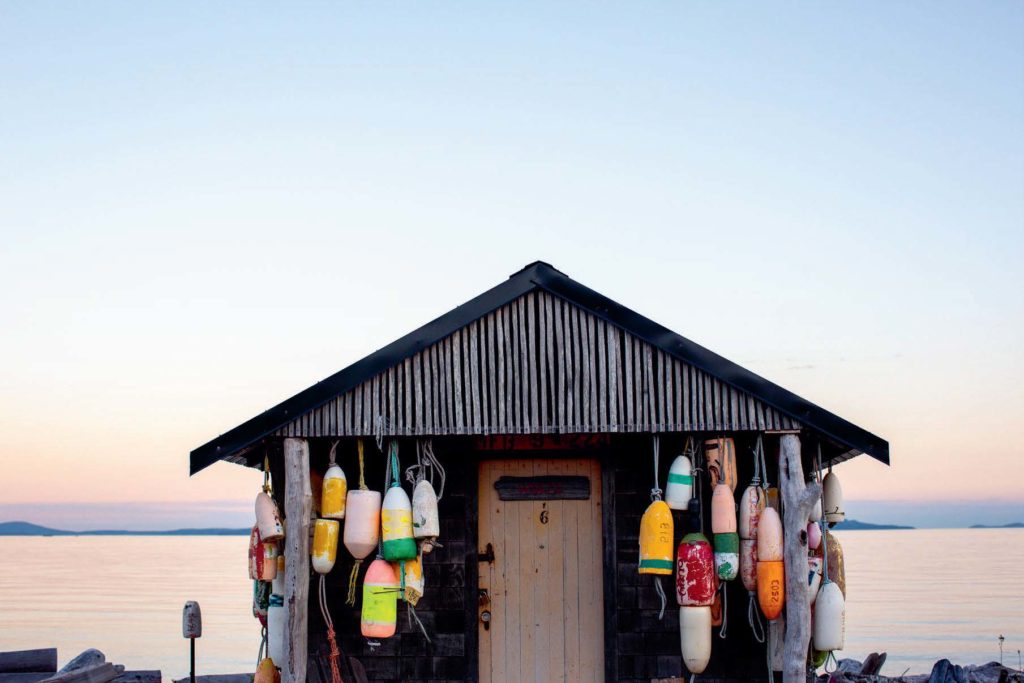
These Photos Will Make You Want to Book a Trip to the San Juans Immediately
Just a two-hour drive from Seattle, the San Juans are a quiet escape for weekend visitors, especially in the drier summer months.

We’re loving Emily Nathan’s new book Coastlines: At the Water’s Edge, which brings together stunning images and essays from photographers across the globe. Here, the founder of Tiny Atlas Quarterly explores the beauty of the San Juans just off the coast of Washington state, allowing us to experience a sliver of the beauty found across these serene islands replete with stunning scenery—and seafood to match.
The San Juans are a quiet place. Forming an archipelago in the cold waters of the Pacific Northwest about a two-hour drive from Seattle (or a 20-minute drive from Bellingham), they serve as an escape for weekend visitors, especially in the drier summer months when days are often filled with sunshine that lasts until 10 p.m. The islands are close enough to a major metropolis to feel accessible to the year-round residents but just the right distance away to appeal to any travelers seeking an escape.

Emily Nathan
Only a handful of the larger islands have regular car-ferry service; the smaller islands and islets that orbit the larger ones are best experienced by marine craft or seaplanes. Travelers arrive via kayaks, canoes, paddleboards, sailboats, and motored vessels of all kinds to uninhabited islets for an afternoon of fishing or overnight camping. Entire islands, like Clark Island, which is a short boat ride from the car-ferry–serviced Lummi Island, are designated as state parks and offer campsites (complete with bathrooms and cook stations) perched on low bluffs overlooking the water.

Emily Nathan
The area has been the home of the Salish tribes for thousands of years, and the waters of the Salish Sea, which surround the San Juans, are cold, deep, and nutrient rich. The area is also home to endangered orca whales and other marine mammals, hundreds of bird and fish species, and thousands of kinds of invertebrates including colorful anemones, sea urchins, mussels, and oysters.
Reefnet fishing, which uses nets to hoist fish from the sea, has traditionally been used to catch wild Pacific salmon along the coastal waters surrounding Lummi Island. This method of fishing was developed by native people in the region and is still in use today, most notably in a collaborative effort between the Lummi Nation tribe and the local fishery Lummi Island Wild. After the nets are lifted from the water, spotters standing on high ladders identify and remove any bycatch before harvesting their take. Electric motors running on batteries fueled by solar power are used to raise and lower the nets, and the result is deliciously clean-tasting local wild-caught salmon.
Activities on the islands center around being outside in nature: hiking, gardening, and enjoying the water. Many artists have made their way to the islands, and galleries sit alongside sustainable restaurants and breweries on Lopez, Orcas, Lummi, and San Juan Island. The emerging food scene focuses on the abundant sea life and wide variety of foraged edible plants and locally grown produce. In the San Juans, summer days are spent riding bikes, beachcombing for shells and smooth granite stones, and hiking through coastal forests to lookouts over nearby islands.

Reprinted from COASTLINES: AT THE WATER’S EDGE by Emily Nathan. Copyright © 2022 by Emily Nathan. Published by Ten Speed Press, an imprint of Random House, a division of Penguin Random House LLC.
